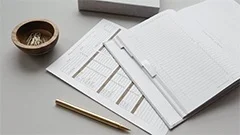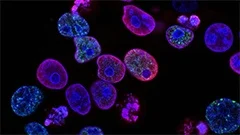Introduction
The human body is an intricate system of interconnected muscular structures, each with a unique function and role. Among these, the shoulder muscles stand out due to their complexity, versatility, and importance in daily movements. This course aims to provide an extensive exploration of the shoulder muscles within the scope of myology, focusing on their anatomical structure, function, innervation, and clinical significance.
Anatomy of the Shoulder Muscles
Overview
The shoulder complex is composed of four regions: the glenohumeral joint, the acromioclavicular joint, the sternoclavicular joint, and the scapulothoracic articulation. The primary movers of these joints are various muscles belonging to three groups: the rotator cuff, the deltoid, and the pectoralis major, minor, and subclavius.
Rotator Cuff
The rotator cuff is a group of four muscles that encase and stabilize the shoulder joint: the supraspinatus, infraspinatus, teres minor, and subscapularis. Each muscle originates on the scapula and inserts onto the humerus, contributing to various aspects of shoulder movement and stability.
Supraspinatus
The supraspinatus is a rotator cuff muscle responsible for initiating abduction and maintaining stability during overhead activities. Its tendon can be injured due to repetitive motion or age-related degeneration, leading to impingement syndrome and rotator cuff tears.
Infraspinatus
The infraspinatus is another rotator cuff muscle that primarily externally rotates the humerus. It also helps stabilize the shoulder during abduction and adduction. Damage to the infraspinatus can result in a decreased range of motion and instability.
Teres Minor
The teres minor is a small muscle that assists the infraspinatus in external rotation and also contributes to adduction and medial rotation of the humerus. Injuries to this muscle are rare but can cause pain and weakness when performing specific movements, such as reaching behind the back.
Subscapularis
The subscapularis is the largest and most functionally important rotator cuff muscle. It internally rotates the humerus and helps stabilize the shoulder during activities like throwing or lifting heavy objects. Tears in the subscapularis tendon can lead to significant weakness and instability in the shoulder joint.
Deltoid Muscle
The deltoid is a triangular muscle that envelops the shoulder and is responsible for various movements of the arm, including flexion, abduction, and lateral rotation. The deltoid can be divided into three sections: anterior, middle, and posterior.
Anterior Deltoid
The anterior deltoid fibers originate on the clavicle and acromion process of the scapula and insert onto the humeral shaft. They primarily contribute to arm flexion and medial rotation. Injuries or strains in this region can cause pain during activities such as pressing movements, bench press, or pushing motions like opening a door.
Middle Deltoid
The middle deltoid fibers originate from the scapular spine and acromion process, inserting onto the humeral shaft. They assist the anterior deltoid in arm flexion but primarily contribute to abduction of the arm at the shoulder joint. Injuries or strains in this region can cause pain when performing exercises like lateral raises or military presses.
Posterior Deltoid
The posterior deltoid fibers originate from the scapular spine and insert onto the humeral shaft. They are primarily responsible for external rotation and extension of the arm, contributing to movements like throwing a ball or reaching behind the back. Injuries in this region can cause pain during these types of activities.
Pectoral Muscles
The pectoral muscles are located on the chest and contribute significantly to various shoulder movements. The major pectoral muscles include the pectoralis major, minor, and subclavius.
Pectoralis Major
The pectoralis major is a large, fan-shaped muscle that originates from the sternum, clavicle, and ribs. It inserts onto the humerus, helping with arm flexion, adduction, and medial rotation. Injuries or strains in this muscle can cause pain during chest press exercises or everyday activities like pushing heavy objects.
Pectoralis Minor
The pectoralis minor is a small muscle that lies beneath the major pectoral muscles and assists with shoulder movements such as internal rotation, adduction, and depressing the scapula. Injuries in this region can cause pain or discomfort during activities like rowing exercises or reaching forward.
Subclavius Muscle
The subclavius muscle is a small muscle that originates on the first rib and inserts onto the coracoid process of the scapula. It helps stabilize the scapula during arm movements by preventing it from rotating upward, thus protecting the shoulder joint. Injuries to this muscle are rare but can cause pain and limited range of motion when performing specific exercises or everyday activities.
Innervation and Clinical Significance
Each shoulder muscle is innervated by a branch of the brachial plexus, specifically the axillary, musculocutaneous, radial, and anterior and posterior circumflex humeral nerves. Lesions or damage to these nerves can result in impaired shoulder function or pain. Clinically, shoulder injuries are common due to the repeated stress placed on these muscles during various activities, making proper stretching, strengthening, and exercise techniques essential for maintaining shoulder health.
MCQ: Test your knowledge!
Do you think you know everything about this course? Don't fall into the traps, train with MCQs! eBiologie has hundreds of questions to help you master this subject.
These courses might interest you
Create a free account to receive courses, MCQs, and advice to succeed in your studies!
eBiologie offers several eBooks containing MCQ series (5 booklets available free for each subscriber).



